Just thought I would show you all what a RAW file looks like from the Fuji GX617 shot on Velvia 50 slide film. When I say RAW file I am of course talking about how my shot looks in a plastic sleeve back from the lab complete with the film rebate. I just love getting film back and you put it on your light table and the whole roll looks like this and your job is to pick which one looks better. Most of the time it comes down to which shot has the better wave movement.
What I love about shooting film now is in a world / profession that is super saturated with digital images, it is now us slide film shooters that have images with the unique look about them in terms of colour capture and tones. Sure I will be the first to admit that digital has a lot over shooting film in some areas. But with capturing that amazing natural colour for me it beats digital hands down. No clipping RGB colour channels here !!
With film it really is more about the knowledge and skill of capture, exposure and tonal range control than your ability in photoshop to bring the image to it’s intended glory.



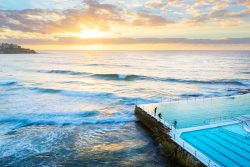

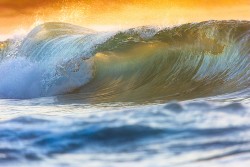
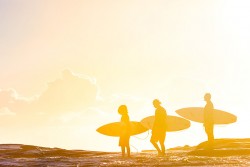

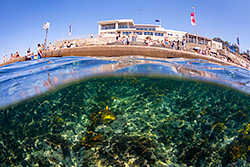

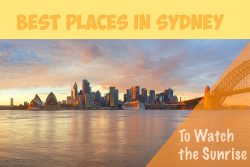
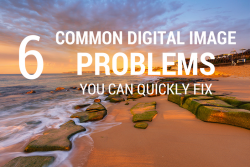
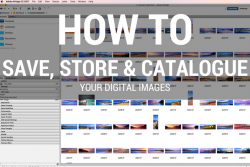
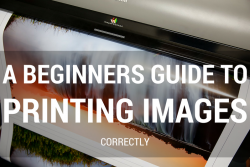
this is why i want a panoramic film camera 😀
i got a question!!
when you are using your film camera, do u expose for the shadows, then take another meter reading for the sky, then balance it out with ND grads??
i was talking to casey smith, and thats how he does it, his light meter has a 5 degree spot thing on it
i was just wondering if this is the same way you use to get good exposures ?
Mitch you don’t meter for the shadows. You go for more of a mid tone balance. That way you get a better exposure and your highlights are controlled. The difference between shadow and highlight is too greater a range for slide film.
Like on the shot above you dont meter for the dark rocks (shadow) you meter for the green vegetation on the left and then meter for the water and a few others and then work out whats your best overall exposure and go with that. Casey based his initial 617 outfit on my set up so I too also have the 5 degree Minolta spot meter. But a lot of photographers use their DSLR on spot meter and then dial that reading into their panoramic camera.
Your pictures are exceptional. I’ve been interested in panoramic images for a while now as well as going back to film, so I’ve decided to give it a try. I’m going to be renting a Fuji GX617 with a 90mm lens and plan on taking photos of fall foliage in the northeast United States. I plan on shooting velvia 50 but the lowest ISO setting on my DSLR is 100. I’d like to use my DSLR (EOS 5D Mark II) as my light meter, but how do I convert the settings reported to 50 ASA so that I can input into the Fuji 617? Thanks in advance for the help!
Use the DSLR at ISO 100 and double the exposure to get the correct value for the ISO 50 film. For example, if the digital camera meter reads 1/250 at F8, just set the film camera for 1/125 at F8 or 1/250 at F5.6.
ah ok thanks matt, ohh sorry i ment mid tones but yeah…
hmmm so whats more accurate a handheld light meter or just using a camera??
cheers
From my tests with all types of cameras on my courses. Nikon, Canon, Sony etc. There is almost no difference with using a DSLR on spot or a hand held light meter.
Awesome colour in this one Matt the yellows really pop, and no stitching errors to overcome either.
That’s right Matt no water stitching issues or long exposure noise. Just wish you could get the angles of view out of one camera with film like you can with digital.
Matt Well said, I agree, you’ve put into words what I’ve been feeling for a long time
Allen
Thanks Allen… it is an interesting topic to discuss than could have a few spin off topics as well. I might sit down and look at writing a few articles for my Rubbing Pixels site.
Really nice light there, Matt. I’ve never shot film myself, but I was looking through some of Darren’s slides a little while ago and man, they look sweet!
Thanks Beau… yea 617 trannys are impressive to look at. Especially for people who havent really been exposed to that kind format.
Nice shot! I just sold my 645 system, so the hunt for a 617 starts 😀
Hey Matt, Great post and pic.
I am interested in shooting panos and was wondering if it makes a difference shooting colour negatives vs transparencies? Just making the switch to film and loving photography more than ever.
HI Mark,
I have only shot slide film… shooting print film on a 617 for landscapes would be a waste of time and money. Shooting slide is well worth learning.
Matt,
That is absolutely beautiful!! I’d die to see what an Imacon/Hasselblad full-resolution scan of that would look like!
One thing I’m going to take issue with you on though: you say ‘no clipping of RGB colour channels!’. You’re kidding right? It’d appear that you’ve already ‘blown’ your channels in the sky where Velvia has ‘clipped’ to white… remember that Velvia has a lower latitude of exposure than digital, which itself is typically thought to have a lower exposure latitude than negative film. With Velvia it’s all about limiting the contrast of the scene with polarizers & graduated ND filters, then allowing Velvia to add the ‘pop’ & contrast (it’s like Velvia doing the post-processing rather than Photoshop/Lightroom tone curves).
But, man, I’d love to see a slide that big on a light table. I’ve recently tried to step up to medium format with a Mamiya/Phase One 645 system but am having trouble getting a film back that doesn’t bend my film… film is wonderful, but its drawbacks, tediousness & lack of support these days really heralds its death. Which is really too bad.
Rishi, happy for you to take issue on it… brightest RGB channel in the whole sky is 247 and that was in the red channel. (thats off the TIFF drum scan). I found a tiny area of 255 in the red and thats off the crashing wave on the left.
Hi Matt, a bit of a late reply here, but here goes anyway:
The raw values of channels you quote are dependent upon the processing of the raw scan (including the processing of the raw data that the scanner collects even before it’s delivered to a final flattened file that you view). So you can get scans where nothing is 255… but that doesn’t say anything about whether or not you ‘blew’ color channels in the film itself. I’m sure you understand this & we’re just confusing terms here!
For example, you could have a completely ‘blown’ piece of Velvia that you scan but the brightest pixel reads, say, (160, 159, 160). It’s all in the processing of the scan.
Velvia ‘blows’ color channels quite readily… especially red, in my experience. Even ‘proper’ exposure of a red tulip will sometimes lead to completely loss of detail b/c the red channel is effectively ‘clipping’.
Anyway, my initial point stands: your photography is just stunning!
Cheers,
Rishi
Hi Matt,
I love all your art! and I am a newbies for film photography, so far i has Mamiya and Contax in 645 format. but its all easy to shot because there is meter build in.
I am thinking to buy Fuji617, because I always love panoramic! but the problem is how can i do exact framing with this camera and “Ground glass” how to use it and where can i buy that?
Thank you.
Hi Liam, I have never used a ground glass in the Fuji’s. Exact framing will come with experience and understanding what is gained and lost with how you look through the viewfinder. Buying a ground glass is a case of finding one on ebay for the GX617 camera, the only difference is the when you put it in the G617 it dosent clip in you have to hold it.
Hi Matt, my question is slightly off the topic above, but I am confused at what you say on your scanning. You indicate that you use 400dpi for all of your work, and 6X17cm or say 2.5X7 inches. I usually print maximum at 200dpi, so that implies your wonderful photos are only printed at 5X14 inches. Surely something is wrong in my understanding or maths??
Hi Geoff,
I dont know too much into the maths of it all, but at 400 dpi / 400% zoom I get a final scan that is over 10,000 pixels wide which is approx 67cm wide.
I know Ken Duncans CFL lab scans customers work at 200 dpi with their Imacon.
The settings I use are ones told to me by a well known Aussie photographer.